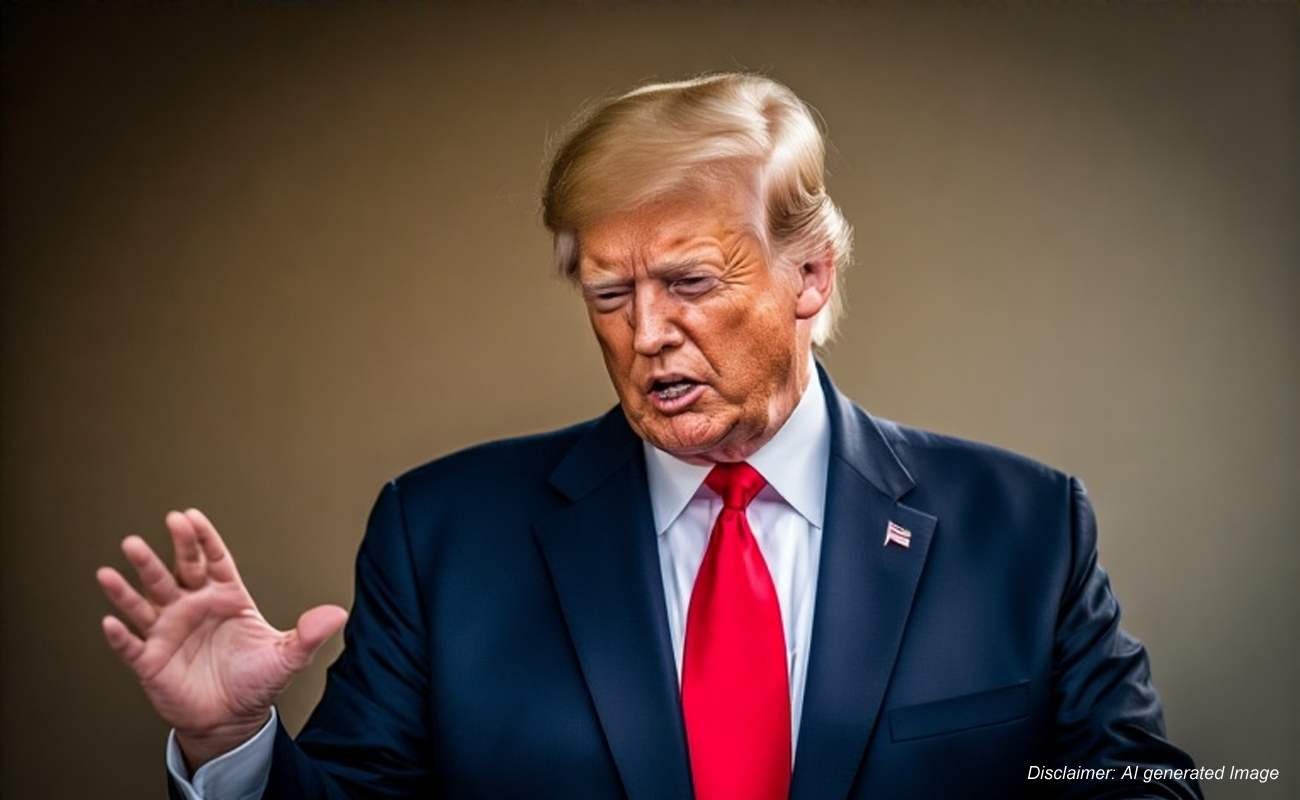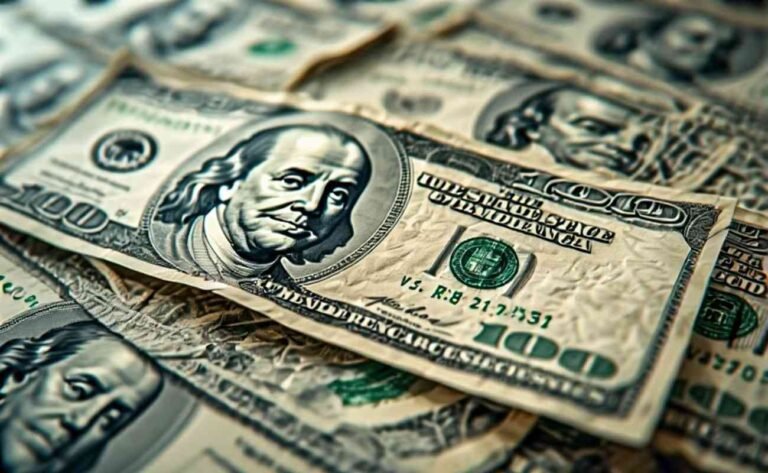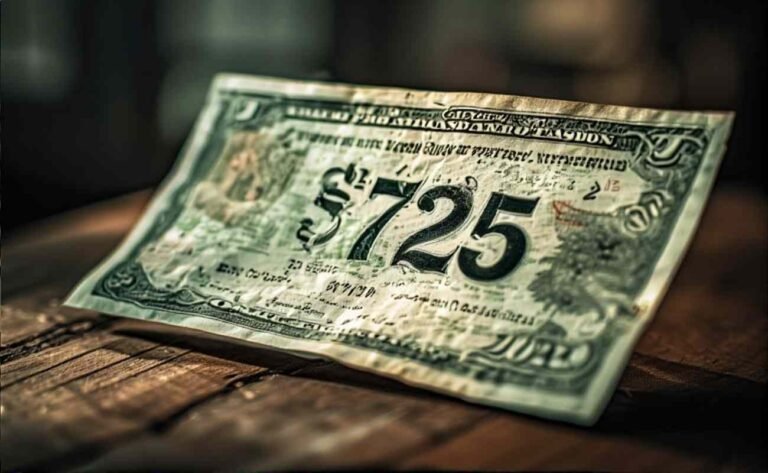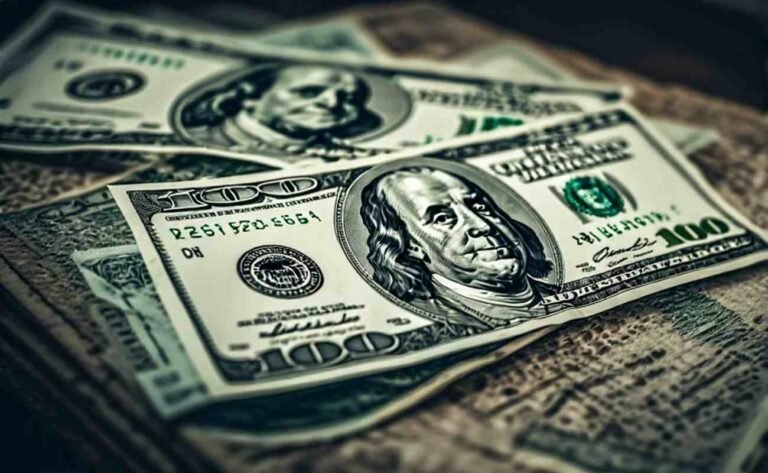Tariff Rebate Stimulus Checks in 2025- $600-$2,400
In 2025, the concept of tariff rebate stimulus checks has sparked significant interest among American taxpayers, with President Donald Trump and Senator Josh Hawley proposing a plan to distribute funds generated from tariff revenues. These rebates aim to offset the financial burden of higher consumer prices caused by tariffs on imported goods, offering potential relief to eligible households.
This comprehensive guide breaks down everything you need to know about tariff rebate checks—from eligibility and payment amounts to potential economic impacts and how to prepare. With over $100 billion in tariff revenue collected in the first half of 2025, the proposal could mean significant financial support for many Americans, but Congressional approval is still required, and details remain fluid.
This article dives deep into the specifics, providing clear, actionable insights through detailed lists and tables. Whether you’re wondering about qualification criteria, expected payment timelines, or the broader implications of this policy, we’ve got you covered. Let’s explore the 2025 tariff rebate stimulus check landscape with a focus on clarity and high readability.
Here are the key points about the proposed tariff rebate stimulus checks, based on the latest legislative and policy developments in 2025-2026:
2025 Tariff Rebate Stimulus Check
1. Proposal Overview
- Legislation: The American Worker Rebate Act of 2025, introduced by Sen. Josh Hawley (R-MO), proposes direct payments funded by tariff revenue, similar to pandemic-era stimulus checks .
- Amount: Minimum $600 per adult and dependent child (e.g., $2,400 for a family of four), with potential increases if tariff revenue exceeds projections .
- Income Limits: Rebates phase out by 5% for incomes above:
- $150,000 (joint filers)
- $112,500 (heads of household)
- $75,000 (single filers) .
2. Funding Source
- Tariff Revenue: Checks would be funded by tariffs on imported goods, which surged to $27 billion in June 2025 (a 301% increase from 2024) .
- Projections: Annual tariff revenue could reach $300 billion, though critics argue this ignores broader economic costs (e.g., higher consumer prices) .
3. Eligibility & Distribution
- Who Qualifies: U.S. residents with valid Social Security numbers, excluding nonresident aliens, dependents, and high earners .
- Delivery: Payments would likely be distributed via direct deposit or mailed checks, similar to past stimulus programs .
- Timeline: If approved, checks could go out as early as late 2025 or 2026 .
4. Political & Economic Debates
- Supporters: Argue rebates offset tariff-induced price hikes and return wealth to workers. Trump called it a “little rebate” for lower-income Americans .
- Opponents: GOP fiscal conservatives (e.g., Sen. Rand Paul) oppose it, preferring deficit reduction. Critics warn it could worsen inflation (like COVID-era stimulus) and increase the $3.4 trillion deficit from Trump’s recent tax bill .
- Inflation Risk: Economists note pandemic stimulus added 2.6 percentage points to inflation; similar spending now could repeat this .
5. Uncertain Future
- The bill faces low GOP support and competing priorities (e.g., debt reduction). Earlier proposals (e.g., Musk’s “$5,000 DOGE checks”) failed .
- Legal hurdles: Congress must approve tariff revenue redistribution; courts have questioned Trump’s tariff authority .
Key Takeaways
- Rebates aim to compensate for tariff costs but face political and economic headwinds.
- Income thresholds mirror 2020 stimulus, but amounts may fluctuate with tariff revenue.
- Status: Still a proposal—no checks are guaranteed unless Congress acts .
What Are Tariff Rebate Stimulus Checks?
Tariff rebate stimulus checks are proposed direct payments to U.S. taxpayers, funded by federal revenue from tariffs imposed on imported goods. Unlike traditional stimulus checks tied to economic recovery (like those during the COVID-19 pandemic), these rebates aim to offset price increases caused by tariffs. President Trump has suggested using the substantial tariff revenue—over $100 billion in the first half of 2025 alone—to provide financial relief to Americans, particularly those in lower and middle-income brackets. However, the plan requires Congressional approval, and details like payment amounts and eligibility are still under discussion.
For instance, Senator Josh Hawley’s American Worker Rebate Act of 2025 proposes a minimum of $600 per adult and dependent child, potentially totaling $2,400 for a family of four. This guide will unpack the proposal’s key components, helping you understand how it might affect your finances.
Why Tariff Rebate Checks Matter in 2025
The introduction of tariffs has led to higher prices for imported goods, impacting household budgets. These rebates aim to ease that burden while stimulating the economy. However, critics warn that such payments could fuel inflation, similar to the effects of COVID-era stimulus checks, which contributed to a 41-year inflation high of over 9% in 2022. Understanding the nuances of this policy is crucial for taxpayers eager to navigate their financial planning.
Below, we’ve organized the key details into lists and tables to ensure you can quickly grasp the essentials and stay informed.
Key Details of the 2025 Tariff Rebate Stimulus Checks
Here’s a breakdown of the critical aspects of the proposed tariff rebate payments:
- Funding Source: Revenue from tariffs on imported goods, which generated $27 billion in June 2025 alone, a 301% increase from June 2024.
- Proposed Amount: At least $600 per adult and dependent child, with potential increases if tariff revenue exceeds projections.
- Eligibility: Likely means-tested, with phase-outs for individuals earning over $75,000 or joint filers earning over $150,000.
- Purpose: To offset higher consumer prices due to tariffs and provide economic relief.
- Legislative Status: Requires Congressional approval; Sen. Josh Hawley introduced the American Worker Rebate Act of 2025, but it’s not yet law.
- Distribution Method: Likely structured as a refundable tax credit, with possible advance payments in 2024 or 2025.
Tariff Rebate Stimulus Check Details
Eligibility Criteria
To qualify for the 2025 tariff rebate checks, you’ll likely need to meet specific requirements. While final rules are pending, here’s what we know based on current proposals:
- Residency: Must be a U.S. citizen, permanent resident, or qualifying U.S. person (nonresident aliens are excluded).
- Social Security Number: A valid SSN is required for each eligible individual, including dependents.
- Income Limits:
- Individuals with adjusted gross income (AGI) up to $75,000.
- Heads of household with AGI up to $112,500.
- Joint filers with AGI up to $150,000.
- Rebates phase out by 5% for incomes above these thresholds.
- Dependents: Qualifying children (typically under 17) may also receive $600 each.
- Tax Compliance: Your taxes must be filed and up-to-date, similar to requirements for past stimulus payments.
Expected Payment Amounts
The proposed tariff relief payments vary based on household size and tariff revenue:
| Household Type | Minimum Rebate | Potential Maximum (if revenue exceeds projections) |
|---|---|---|
| Single Adult | $600 | TBD based on tariff revenue |
| Single with 1 Child | $1,200 | TBD based on tariff revenue |
| Married Couple | $1,200 | TBD based on tariff revenue |
| Family of Four | $2,400 | TBD based on tariff revenue |
Payment Timeline
The timeline for tariff rebate checks depends on legislative progress:
- Legislative Approval: The bill must pass both the House and Senate and be signed by the President.
- Earliest Distribution: Advance payments could begin in late 2024 based on 2023 tax returns, if approved.
- Primary Distribution: Most likely in 2025 as a refundable tax credit during the tax filing season.
- Cutoff Date: No payments will be issued after December 31, 2026, per the proposed bill.
Economic Impact
The tariff-funded stimulus checks could have significant economic effects:
- Consumer Relief: Offsets higher prices from tariffs, which are projected to cost households $1,300-$1,700 annually through 2026.
- Inflation Risk: Experts warn that rebates could increase inflation, as seen with COVID-era stimulus checks, which added 2.6% to inflation in 2022.
- Deficit Concerns: With a federal debt exceeding $36 trillion, some GOP senators argue for using tariff revenue to reduce the deficit rather than issuing checks.
- Economic Stimulus: Increased consumer spending could boost local economies but may exacerbate price pressures.
How to Prepare for Tariff Rebate Checks
To ensure you’re ready to receive a tariff relief check, take these proactive steps:
- Update Your Tax Information: Ensure your 2023 and 2024 tax returns are filed with accurate income and dependent details.
- Verify Your SSN: Confirm that all household members have valid Social Security Numbers.
- Monitor Legislation: Stay updated on the American Worker Rebate Act of 2025 through reliable sources like CBS News for the latest developments.
- Check Banking Details: If you prefer direct deposits, ensure your banking information is updated with the IRS.
- Avoid Scams: Beware of fraudulent texts or emails claiming to be from the IRS. Always verify information through official channels like IRS.gov.
For more insights on preparing for tax-related payments, check out our guide on the 600 Tariff Rebate Checks Guide 2025.
Potential Challenges and Criticisms
While the tariff rebate stimulus checks offer potential relief, there are challenges to consider:
- Congressional Approval: The proposal faces hurdles, with some GOP senators, like Ron Johnson, calling it “the dumbest idea” and preferring debt reduction.
- Inflation Risks: Experts, including Joseph Rosenberg from the Urban-Brookings Tax Policy Center, warn that rebates could drive inflation, as seen with past stimulus programs.
- Logistical Issues: Distributing checks requires coordination between the IRS, Treasury, and Congress, which could delay payments.
- Economic Trade-offs: The Congressional Budget Office estimates Trump’s tax-and-spending package could add $3.4 trillion to the deficit by 2034, complicating funding.
Comparison with Past Stimulus Programs
To understand the 2025 tariff rebates, let’s compare them to previous stimulus efforts:
| Feature | COVID-19 Stimulus (2020-2021) | Tariff Rebate Checks (2025) |
|---|---|---|
| Funding Source | Federal budget | Tariff revenue |
| Purpose | Economic recovery | Offset tariff-related price increases |
| Amount | $1,200-$1,400 per adult | $600+ per adult/child |
| Eligibility | Broad, with income phase-outs | Means-tested, income-based |
| Inflation Impact | Contributed to 9% inflation | Potential 2.6% increase |
| Legislative Status | Approved and distributed | Pending Congressional approval |
This comparison highlights the unique nature of tariff relief payments, which are tied to trade policy rather than broad economic recovery. For more on past stimulus programs, visit Forbes for detailed analyses.
State-Level Inflation Relief Programs
In addition to federal tariff rebate checks, several states have introduced their own inflation relief programs:
- New York: Offers one-time payments of $200 for individuals (AGI up to $75,000) and $400 for joint filers (AGI up to $150,000).
- Pennsylvania: Provides property tax or rent rebates for eligible residents.
- Colorado: Issues TABOR refunds to taxpayers, as outlined in our Colorado TABOR Refunds guide.
- Georgia: Distributes inflation refund checks based on state tax filings.
These state programs complement federal efforts, offering additional relief to residents facing rising costs.
FAQs About Tariff Rebate Stimulus Checks
Here are answers to common questions about tariff relief payments:
- Will everyone get a tariff rebate check?
- No, eligibility is likely limited to U.S. residents with valid SSNs and incomes below specific thresholds ($75,000 for individuals, $150,000 for joint filers).
- How much will the checks be?
- A minimum of $600 per adult and child, with potential increases if tariff revenue exceeds projections.
- When will payments be issued?
- If approved, payments could start in late 2024 or during the 2025 tax season, but no later than December 31, 2026.
- Do I need to apply for the rebate?
- Likely not; payments may be automatic based on tax returns, similar to past stimulus checks.
- Will the rebates affect my taxes?
- No, the rebates are structured as refundable tax credits and won’t be garnished for federal debts like taxes or student loans.
Economic and Political Context
The tariff rebate stimulus checks come at a time of economic and political complexity. Tariffs have generated significant revenue—$27 billion in June 2025 alone—but they’ve also driven up consumer prices, with the Tax Foundation projecting an average household cost increase of $1,300 in 2025. President Trump has emphasized using tariff revenue to both provide rebates and reduce the federal debt, which exceeds $36 trillion. However, critics argue that rebates could exacerbate inflation, especially after the passage of the “One Big Beautiful Bill Act,” which may add $3.4 trillion to the deficit by 2034.
Politically, the proposal has mixed support. Senator Hawley’s bill aligns with Trump’s vision, but other Republicans, like Senator Cynthia Lummis, advocate for debt reduction or alternative uses like a Bitcoin reserve. Public sentiment, as seen on platforms like X, shows excitement for potential checks but also skepticism due to past unfulfilled proposals, such as the DOGE dividend.
How Tariff Rebates Differ from DOGE Dividend Proposals
Earlier in 2025, Trump and Elon Musk floated a DOGE dividend plan, promising up to $5,000 per household from savings via the Department of Government Efficiency. However, this idea fizzled due to unrealistic savings projections and lack of Congressional support. Unlike the DOGE plan, tariff rebate checks are grounded in tangible revenue streams ($100 billion collected in 2025), making them more feasible but still subject to legislative hurdles.
Tips for Staying Informed
To keep up with tariff rebate stimulus check developments:
- Follow Trusted News Sources: Check outlets like NBC News for updates on legislative progress.
- Use IRS Tools: The IRS website offers resources to track tax credits and refunds.
- Engage with Community Discussions: Platforms like X can provide real-time sentiment, but verify claims with official sources.
- Consult a Tax Professional: For personalized advice, especially if your income is near the phase-out thresholds.
Conclusion
The 2025 tariff rebate stimulus checks represent a bold proposal to ease the financial strain of tariffs while leveraging significant revenue from trade policies. With Senator Hawley’s American Worker Rebate Act of 2025 proposing at least $600 per adult and child, families could see meaningful relief—if Congress approves. However, challenges like inflation risks, deficit concerns, and logistical hurdles remain. By staying informed and preparing your tax information, you can position yourself to benefit from these potential payments.
For more on related financial relief programs, explore our guide on New York’s $400 Inflation Relief Checks or visit IRS.gov for official tax updates.







